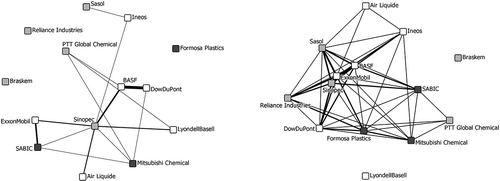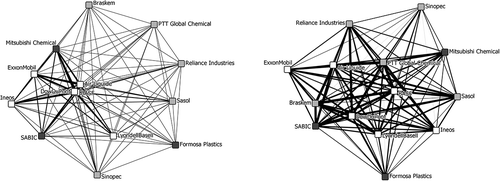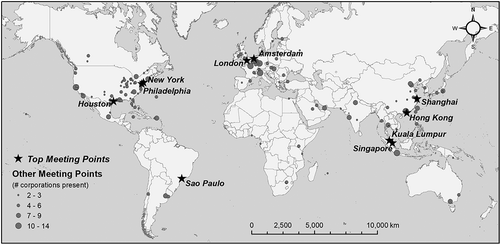Figures & data
Table 1 Sampled Companies, with Data Extracted from the List of Top Fifty Chemical Companies in 2016 according to Chemical & Engineering News (https://cen.acs.org/sections/global-top-50.html)
Figure 1. Corporate board interlock network based on indirect interlocks through other companies (left) and through policy-planning institutes, other organizations, and states (right)

Table 2 Summary of Results of the Multiscalar Corporate Network Analysis through the Concepts of Contextuality, Path Dependence, and Contingency
Figure 2. Joint venture interlock network based on direct joint venture integration (left) and through joint ventures with the same external companies (right)

Figure 3. Spatial interlock network based on absolute number of overlapping locations (left side) and relative number (right side)


